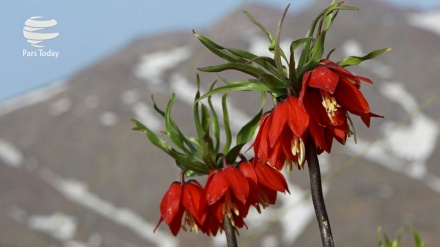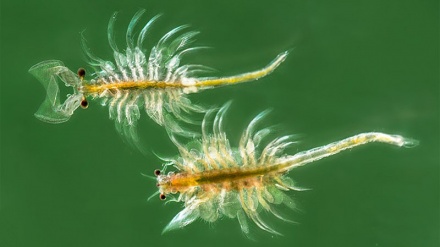Iran’s rare animal and plant species (1)
Iran maintains a diverse climate and one of the richest bio-diversities in the world. According to countless ecologists, Iran is among the ten superior countries round the world in regard to bio-diversity. Within this series, we will introduce some of Iran’s rare animal and plant species, which are of paramount importance and have captured the attention of global organizations. Today, we study one of the rarest animal species in the world, Iranian cheetahs.
Given that Iran is home to a number of deserts, mountainous regions such as Alborz and Zagros Mountain Ranges, forested regions, as well as marine ecosystems such as the Caspian Sea, Persian Gulf, and the Sea of Oman, this country maintains a rich bio-diversity. According to the latest figures released by Iran’s Environment Protection Organization, 1140 animal species, 535 bird species, and roughly 650 fish species have been identified in Iran’s ecosystems. The presence of nearly 6,000 plant species in Iran has turned this country into one of the richest countries within the region in this domain. Meanwhile, there are a number of rare animal and plant species in Iran, and the Islamic Republic of Iran is making every effort to save these animal species from possible extinction.
One of the rare animal species is the Asiatic Cheetah, which was once scattered in different regions of West Asia. This animal has only existed in Iran in the past twenty years. Asiatic Cheetah currently has chosen Islamic Republic of Iran’s deserts as its habitat and therefore it seems more appropriate to refer to these animals as Iranian Cheetahs. Up to 40 Asiatic Cheetahs live at the heart of nature. They are considered to be the second feline type on the verge of extinction, worldwide.
Cheetahs are included within the feline group. Given Cheetahs’ long hands and legs, thin and stretched body, and broad chests, they highly resemble Persian Greyhounds. But, in contrast to canines, Cheetahs have small heads, short necks and jaws, and small and round ears. Many mistake Cheetahs for leopards. The stark difference between these two animal species is observed in the shape of their spots. In Cheetahs, spots are round and filled, while spots in leopards are hollow and large. The presence of a black stripe which stretches from the inner corner of Cheetahs’ eyes, parallel to their nose, extending to the side of their lips is one of the distinct features of Cheetahs.
Possession of a flexible vertebral column, large liver and heart, wide nostrils, high-capacity lungs, and a muscular and thin body, has turned Cheetahs into the fastest predators in the world. Cheetahs can sprint up to more than 90 kilometers per hour. This animal can reach the speed of 70 kilometers per hour within a period of two seconds, which in fact is unrivaled compared to the best racing cars in the world. Meanwhile, Cheetahs can maintain this speed at short distance; given that running at a high speed takes a long of energy for Cheetahs. Hence, while in hunting, this animal should make calculated moves in order to catch the prey within the very first several hundred meters.
Cheetah’s favorite prey is antelope. In Iran, Cheetahs hunt deer, chinkaras, ewes, rams, goats, rabbits, foxes, and jackals. Maybe one of the reasons behind the rarity of Iranian Cheetahs is a fall in the number of their prey.
One of the other reasons behind a fall in the number of Iranian cheetahs is related to their reproduction model. The pregnancy of these Cheetahs lasts 95 days and the cubs usually stand at four or five in numbers. Meanwhile, female cheetahs are the ones who choose their partners; which has in turn led to a low reproduction rate among Cheetahs that are held captive.
In the past two decades, state-run organizations and NGOs of Islamic Republic of Iran have focused on this valuable animal. On this basis, locals are taught to allow Cheetahs to hunt sheep in order to save Cheetahs from a possible extinction, given that Cheetahs, unlike wolves, do not attack all existing sheep.
Thanks to such plans, it can be said that the number of Iranian Cheetahs has increased compared to the previous year. Meanwhile, August 31 has been considered as the Day of Protection of Cheetahs. Iranians intend to introduce Iranian Cheetahs as the symbol of their natural heritage to the international community.
MR/ME


